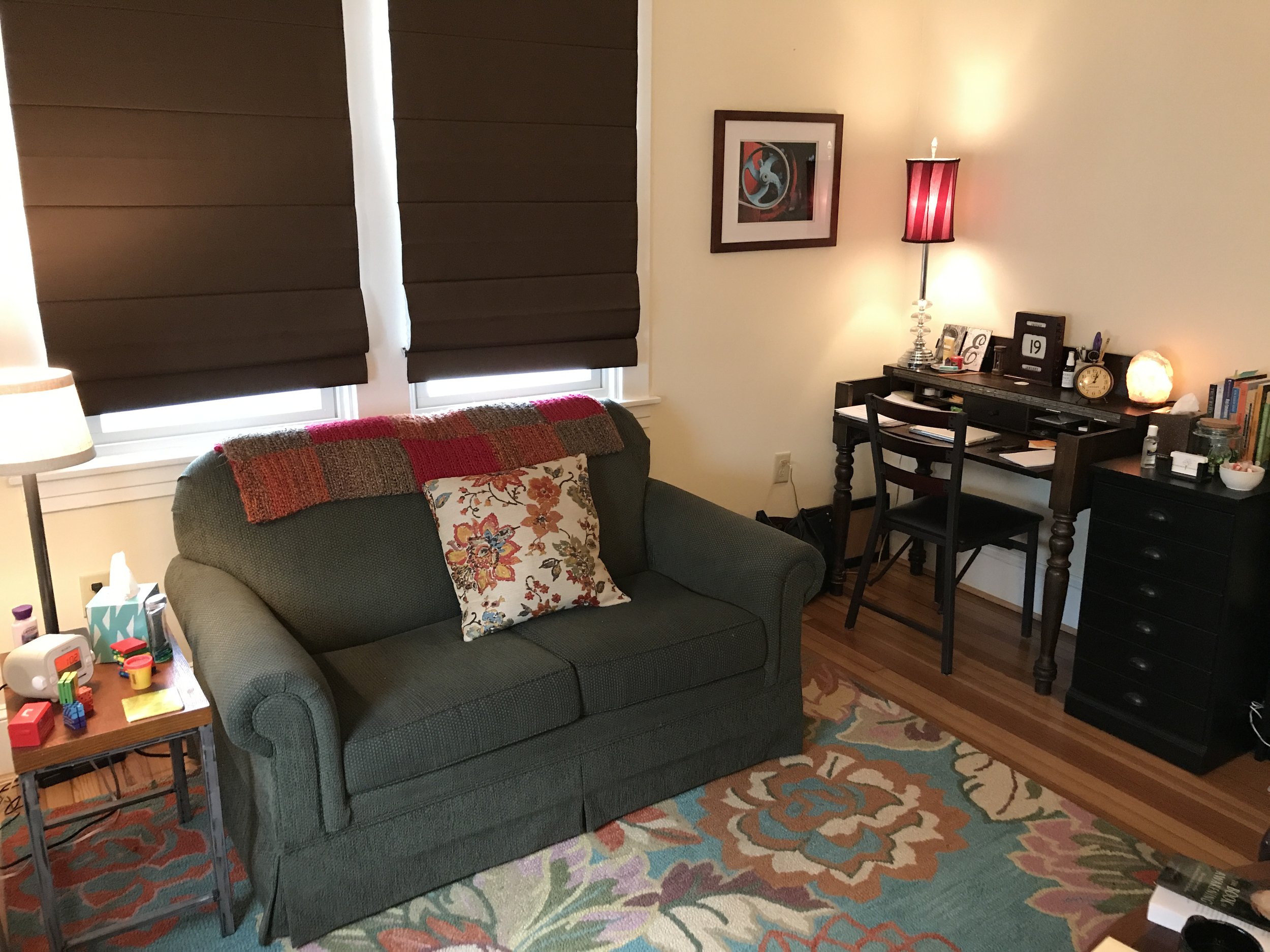It’s not possible, or even desirable, to overcome fear completely. If we did, we would no longer sense real danger, and knowing when to protect yourself is a valuable tool for survival. What we can do is learn to how live with our fears.
Being afraid can be physically and emotionally uncomfortable. You sweat. Your heart rate increases. Breathing becomes shallow. It can be hard to swallow. Your stomach or head might ache and you might begin to shake. All of these bodily sensations alert you to possible danger ahead. And then there’s your brain. It’s probably telling you to get away from whatever it is you’re fearful of. Although your body and mind are telling you to run away from or avoid the scary things, research tells us that the best thing we can do (when there is no actual danger) is to be open and curious about our fears.
Now I get that you’re probably saying that leaning into your fear is the last thing you want to do! But if you allow your fear to exist, if acknowledge it, if you’re open it and willing to explore what your fear wants you to know with compassion, it can actually reduce the fear response. Sounds crazy, right?
An Exercise To Help You Manage Fear
Here’s an exercise you can try the next time fear is keeping you from living your life fully:
If you find you’re avoiding something because the idea of it makes you uncomfortable, find a quiet place and really tune into your body.
What physical sensations do you notice?
- Is your chest tight?
- Are your breaths shallow and quick?
- Can you feel your heart racing?
- Are sweating a little
- Does your throat feel constricted?
Accept whatever sensations you experience. Take a few slow deep breaths. Breathe into any tension you might feel in your body, and imagine the tension melting away as you breathe out.
Now check in with what’s going on in your head.
What are you telling yourself? Are you…
- Worried you’ll embarrass yourself?
- Worried that others will be judging you?
- Afraid you’ll make a mistake, or be rejected?
- Worried that by feeling your fear you’ll get sucked into it or that feeling your fear will make it worse?
I want you to acknowledge all those uncomfortable thoughts. You can say to yourself, “Wow, I’m really scared and struggling right now.” Sometimes it can help to place a hand on your heart and say, “This is so hard. I’m so afraid to ______.” (You fill in the blank.) Try to hold your fear with compassion.
Take some more time to check in with your body once again. Notice if any of the physical sensations have changed. Are they more intense? Have they lessened? If you’re still feeling the strong physical presence of fear, take a few more deep breaths, breathing into tension and imagining the edges of that tension softening just a little.
Now, imagine that your fear is there in the room with you. What does it look like? What color and shape is it? If you have the supplies on hand, draw a picture of it. If not, create a mental picture of the fear.
Get Curious About Fear
Once you have a clear sense of how the fear feels and looks, ask it if it would be willing to let you get closer. Ask it if it’s willing to let you be curious about why it’s showing up. If it feels safe, ask the fear what its worries are and what it wants you to know. Often, our fear wants to protect us, to keep us safe. Maybe it’s worried that you’ll be hurt and wants you to stay at home so you’ll never be hurt again. Maybe it’s worried that you’ll be overwhelmed by grief, and so it wants you to stop thinking about it and move on.
If you can, thank your fear for wanting to protect you. Acknowledge that it’s kept you safe, but that now it’s time for it to step back and let you move forward, so you can take some chances and feel your feelings. When you can appreciate and feel gratitude for your fear and how it’s protected you all these years, it can open up space inside you and calm your body.
It might be too hard to be curious about your fear because it still doesn’t feel safe. If you’re not ready to investigate your fear, that’s OK. Instead, I want you to ask your fear if you can just sit with it for a bit. Allow the fear to be present. Take a few deep, cleansing breaths. Notice where you feel it in your body and continue to offer yourself compassion.
Moving Forward And Facing Your Fear
If you’ve experienced childhood trauma or childhood emotional neglect and you want help managing your fears I’d love work with you on this journey. Please send me an email or call me at 410-340-8469.







































